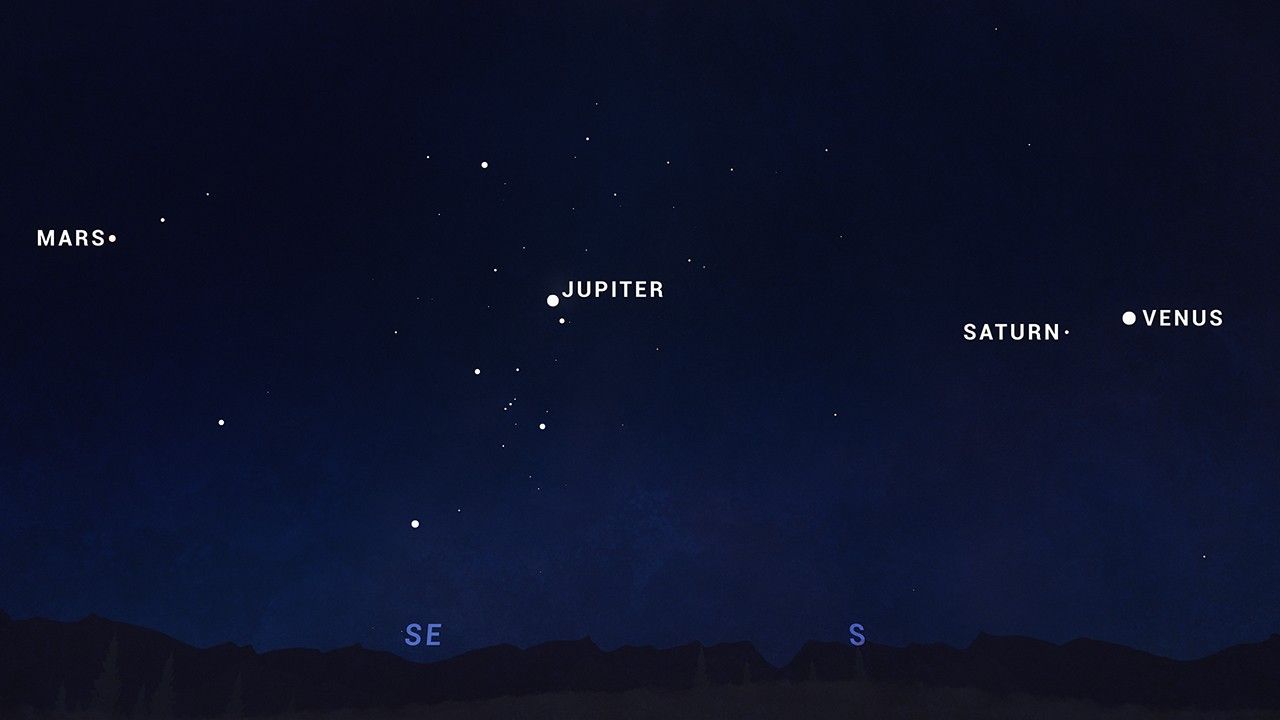This week, people all over the world will have a chance to see an unusual sight in the evening sky – a “planetary parade” of the seven other planets in our Solar System. The next time seven planets will appear at one time like this won’t be until 2040.
There are eight planets, including Earth, that orbit the Sun in our Solar System. (Pluto is no longer considered a planet.) The planets are all different distances from the Sun, and go around the Sun at different speeds. So they’re never actually close together.
But sometimes, from our point of view on Earth, the planets seem to line up, or at least appear in the sky at the same time. This is called a “planetary parade” or “planetary alignment”.

(Source: Based on image from NASA [Public domain], via Wikimedia Commons.)
This week, if you put some effort in, and you’re very lucky, you might be able to see seven planets in the sky at one time. The best time to see the planets will be just after the sun goes down. The planetary parade should be visible through Friday.
If skies are clear, you should be able to see some of the planets without any special equipment. Venus, Mars, and Jupiter are bright, and should be easy to see. For two of the planets, Uranus and Neptune, you’ll need a telescope. And for Mercury and Saturn, you’ll need good luck.

(Source: NASA/JPL-Caltech.)
For the best chance at seeing all seven planets, you should get to a spot with a clear view of the horizon (where the sky meets the ground) facing roughly west. You’ll also want to make sure that there’s not too much light nearby. Having a lot of light around makes it hard for your eyes to adjust so you can study the dark sky.
Saturn and Mercury are the tricky planets. That’s because they go down soon after the Sun does, and in roughly the same area. The light from these planets could get lost in the light of the setting sun. But Mercury is quite bright. If you spot Mercury above the horizon, look slightly below it and to the left and you might see Saturn.
Venus, Mars, and Jupiter aren’t nearly so difficult. Venus will be one of the brightest things in the sky, well above and to the left of Mercury. Jupiter is again above and to the left of Venus – nearly due South. And the reddish glow of Mars will be found toward the southeast.
😕
This image has not been loaded because of your cookie choices. To view the content, you can accept 'Non-necessary' cookies.
For the best chance at seeing all seven planets, you should get to a spot with a clear view of the horizon facing roughly west, and make sure that there’s not too much light nearby. Some planets have been on parade since late January (as seen above). Some planets’ positions are different now – especially Saturn and Neptune.
For the other two planets, Neptune and Uranus, you’ll need a telescope. Neptune will be between Mercury and Venus, but slightly to the left. And if you trace a line from Venus to Jupiter, Uranus will be about two-thirds of the way up that line.
No matter how many planets you wind up actually seeing, you’ll still know that something fairly special is happening. The next planetary parade with seven planets won’t take place until 2040.
Did You Know…?
There’s one planet you won’t be able to see in the sky no matter how hard you look. It’s the one you’re standing on – Earth. So if you want to complete your collection of all eight planets in the Solar System, just look down.
